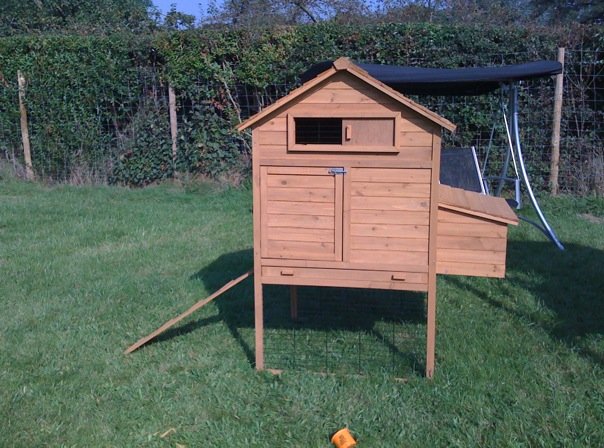It has been left for the West Virginia experiment station to determine just how much difference there would be in egg production between similar flocks kept in warm and cold houses. Two houses, built exactly alike and situated side by side, were selected for the experiment, in each of which were placed twelve pullets. One house had previously been sheathed on the inside and covered with paper to make it perfectly tight. Both were boarded with matched siding and shingle roofs.
The fowls were fed alike in each case. The morning mash consisted of corn meal, ground middlings and ground oats, and at night whole grain was scattered in the litter. They also had fresh water, grit and bone and granulated bone. The experiment started November 24 and continued for five months. The following table shows the number of eggs laid during each period of thirty days :
RESULTS FROM COLD AND WARM HOUSES
| 1 | 2 | 3 | 4 | 5 | Total |
| Warm House | 87 | 130 | 138 | 120 | 154 | 629 |
| Cold House | 39 | 106 | 103 | 124 | 114 | 486 |
The experiment clearly indicates that it is important to build warm and substantial houses for winter egg production.
In very cold climates special pains should be taken to make the roosting place warm. Combs are usually frozen during the night. Double walls battened with lath outside and lined with building paper make a warm roost room. With single-wall houses, double boarding on the north side is a protection. An outside shield of corn stalks or hay and litter is also effective.
Costly material is not needed for the poultry house. Often a discarded barn or other building can be bought cheap and the sound lumber used again. Others on farms can work up home grown timber. For city poulterers, large packing boxes bought at dry goods stores are a cheap source of lumber. Sometimes old street cars have been bought for a trifle and remodeled. Serviceable houses have been made from staves of old barrels as an outside covering. Old strips of carpet, oilcloth, wall paper or building paper may be utilized to some extent as mside protection.
A coat of home-mixed paint improves the durability and appearance of a house enough to pay for its cost. Whitewash is much better than nothing, and will add years to the life of second-hand lumber.
Shingles properly applied to a roof of fairly steep pitch are the best and warmest roofing, but a strip of building paper should be laid beneath to keep out currents of cold air which work in between the shingles. Tin or iron is sometimes cheaper than wood, and for temporary structures, felting paper with a coat of paint will last about two years. An advantage of sheet materials for roofing is that a steep pitch is not needed to carry off the water, but such materials are cold in winter and hard to repair when damaged.
Glass in Cold Weather – Amateur builders commonly use too much glass, which makes a house unnaturally warm on sunny days, but extremely and dangerously cold by night and on stormy days. One window not over three feet square and about eighteen inches above the floor to each ten feet of house length is enough. Warmth is much increased by a shutter or curtain for night. Windows should be arranged to slide to one side or be easily taken out during hot weather.
Double windows are sometimes used, but these are expensive, somewhat of a bother to put on and hard to keep clean. The cut, Figure 3, shows a single sash, double glazed, which a poultryman has recently described. The sash is made so that the glass can be set on both sides of the wooden bars, leaving a half inch or more of space between. This gives a double window and the cost is said to be not more than twenty-five cents extra per sash for the glass and the labor of setting. Those who are providing windows for new or re-modeled poultry houses will do well to experiment with this plan. The glazing must be tight and carefully done to keep out all dirt and dust from the inner surfaces of the glass. Figure 4 shows a window partly double, making a convenient arrangement for ventilating without draft, and securing greater warmth at night and on cloudy days. Roosts, Nests, Troughs, Fountains, etc, will not be treated at length in this volume. Roosts should be all on a level, should be about two inches thick, rounded on the upper side, not over two feet from the floor, and removable.
Troughs and Drinking Places should be protected by slats. Nests should be numerous, secluded and easily removed. Beware of too complicated inside arrangements when large numbers of fowls are kept for profit. Successful large farms are nearly always
conducted on very simple plans, but with emphasis placed on the main needs of the fowls. Notes – Dryness and warmth are the two main essentials in most climates. Everything inside should be removable, also doors and windows. The house should be made tight enough feo hold smoke when fumigated.
Cost ranges from twenty-five cents to five dollars per fowl. A reasonably good business house may be built at one dollar per head. When building an all-around house, provide for summer as well as for winter. Rather than extend beyond seventy-five feet, better start a new building. Study actual needs of fowls rather than comfort of the attendant.
How To Build A Chicken Coop






